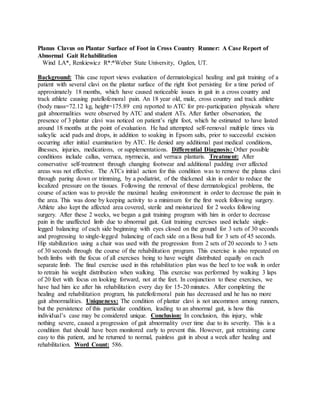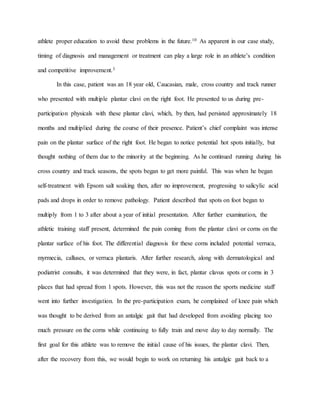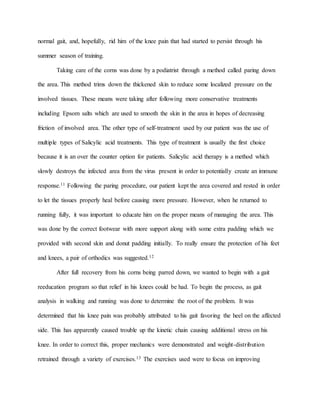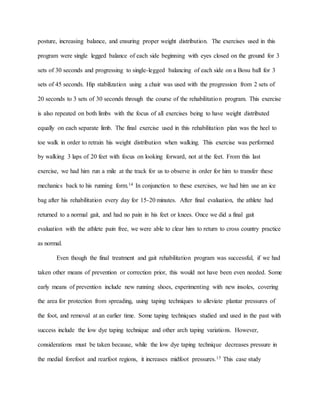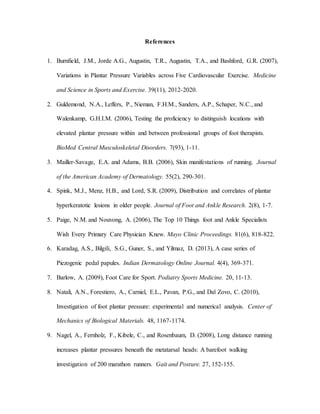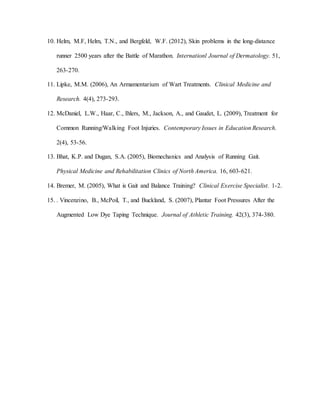This case report describes a cross country runner who developed planus clavi (corns) on the plantar surface of his right foot that persisted for 18 months. Due to avoiding pressure on the corns, he developed an abnormal gait pattern that caused patellofemoral pain in his knee. The corns were removed by a podiatrist trimming the thickened skin. A gait retraining program using exercises to improve balance and weight distribution helped return his gait to normal. Proper prevention and early treatment of foot issues in runners can help avoid abnormal gait development and injuries.
